C# 如何使datagridview中的单元格处于可编辑
Posted
tags:
篇首语:本文由小常识网(cha138.com)小编为大家整理,主要介绍了C# 如何使datagridview中的单元格处于可编辑相关的知识,希望对你有一定的参考价值。
点击“编辑”后,鼠标点击某个单元格,单元格变成可编辑状态

1、实现grid勾选后出现编辑按钮,通过增加一个字段checked来控制,选择事件方法代码。
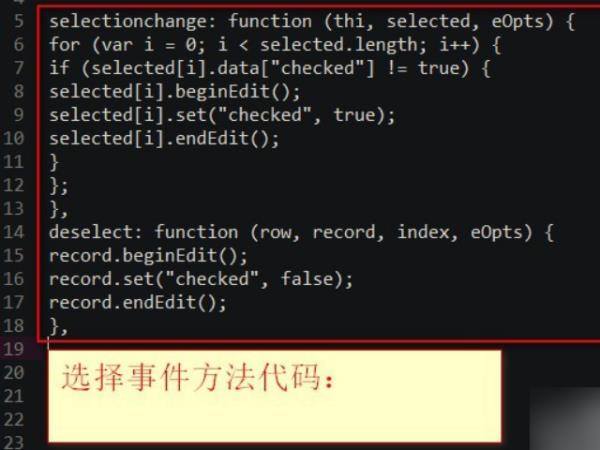
2、grid方法代码和传到弹出窗代码。
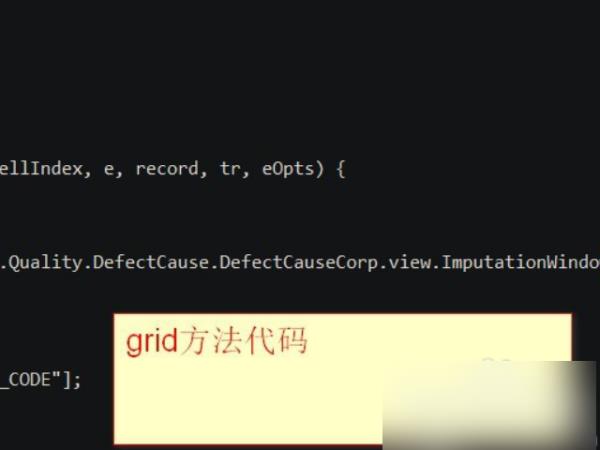
3、加载方法的代码和弹出窗中选中记录代码。

4、测试的效果。

5、弹出窗保存数据到 grid中方法代码。
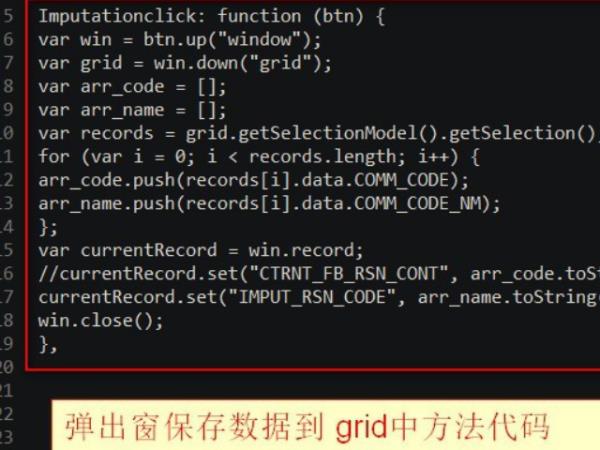
6、其他配置方法代码。

1、在winfrom中拖入一个DataGridView控件。
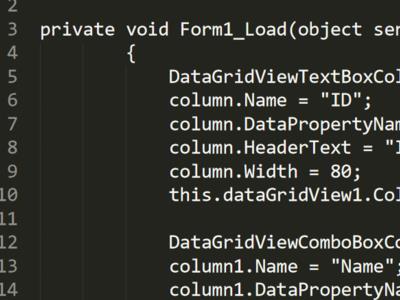
2、绑定数据源。

3、创建一个空表。
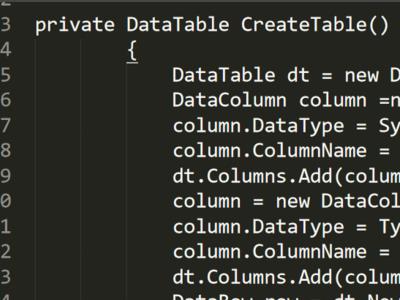
4、当想修改Combox列的数据时,或是想通过Combox的改变做文章的要用到dataGridView1_EditingControlShowing这个事件,即编辑dataGriview中的数据就会触发该事件。

5、拿到选择后的值。返回就可以了。
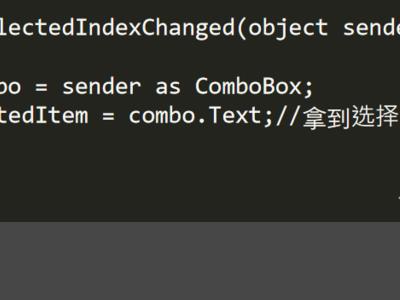
DataGridView控件在实际应用中非常实用,特别需要表格显示数据时。可以静态绑定数据源,这样就自动为DataGridView控件添加相应的行。假如需要动态为DataGridView控件添加新行,方法有很多种,下面简单介绍如何为DataGridView控件动态添加新行的两种方法:
方法一:
int index=this.dataGridView1.Rows.Add();
this.dataGridView1.Rows[index].Cells[0].Value = "1";
this.dataGridView1.Rows[index].Cells[1].Value = "2";
this.dataGridView1.Rows[index].Cells[2].Value = "监听";
利用dataGridView1.Rows.Add()事件为DataGridView控件增加新的行,该函数返回添加新行的索引号,即新行的行号,然后可以通过该索引号操作该行的各个单元格,如dataGridView1.Rows[index].Cells[0].Value = "1"。这是很常用也是很简单的方法。
方法二:
DataGridViewRow row = new DataGridViewRow();
DataGridViewTextBoxCell textboxcell = new DataGridViewTextBoxCell();
textboxcell.Value = "aaa";
row.Cells.Add(textboxcell);
DataGridViewComboBoxCell comboxcell = new DataGridViewComboBoxCell();
row.Cells.Add(comboxcell);
dataGridView1.Rows.Add(row);
2.DataGridView 取得或者修改当前单元格的内容:
当前单元格指的是 DataGridView 焦点所在的单元格,它可以通过 DataGridView 对象的 CurrentCell 属性取得。如果当前单元格不存在的时候,返回Nothing(C#是null)
// 取得当前单元格内容
Console.WriteLine(DataGridView1.CurrentCell.Value);
// 取得当前单元格的列 Index
Console.WriteLine(DataGridView1.CurrentCell.ColumnIndex);
// 取得当前单元格的行 Index
Console.WriteLine(DataGridView1.CurrentCell.RowIndex);
另外,使用 DataGridView.CurrentCellAddress 属性(而不是直接访问单元格)来确定单元格所在的
行: DataGridView.CurrentCellAddress.Y
列:DataGridView.CurrentCellAddress.X 。这对于避免取消共享行的共享非常有用。
当前的单元格可以通过设定 DataGridView 对象的 CurrentCell 来改变。可以通过 CurrentCell 来设定DataGridView 的激活单元格。将 CurrentCell 设为 Nothing(null) 可以取消激活的单元格。
// 设定 (0, 0) 为当前单元格
DataGridView1.CurrentCell = DataGridView1[0, 0];
在整行选中模式开启时,你也可以通过 CurrentCell 来设定选定行。
/// 向下遍历
private void button4_Click(object sender, EventArgs e)
...
int row = this.dataGridView1.CurrentRow.Index + 1;
if (row > this.dataGridView1.RowCount - 1)
row = 0;
this.dataGridView1.CurrentCell = this.dataGridView1[0, row];
/// 向上遍历
private void button5_Click(object sender, EventArgs e)
...
int row = this.dataGridView1.CurrentRow.Index - 1;
if (row < 0)
row = this.dataGridView1.RowCount - 1;
this.dataGridView1.CurrentCell = this.dataGridView1[0, row];
* 注意: this.dataGridView 的索引器的参数是: columnIndex, rowIndex 或是 columnName, rowIndex
这与习惯不同。
3.
DataGridView 行的用户删除操作的自定义:
1)无条件的限制行删除操作。
默认时,DataGridView 是允许用户进行行的删除操作的。如果设置 DataGridView对象的AllowUserToDeleteRows属性为 False 时,用户的行删除操作就被禁止了。
// 禁止DataGridView1的行删除操作。
DataGridView1.AllowUserToDeleteRows = false;
但是,通过 DataGridViewRowCollection.Remove 还是可以进行行的删除。
补足: 如果 DataGridView 绑定的是 DataView 的话,通过 DataView.AllowDelete 也可以控制行的删除。
2)行删除时的条件判断处理。
用户在删除行的时候,将会引发 DataGridView.UserDeletingRow 事件。在这个事件里,可以判断条件并取消删除操作。
// DataGridView1 的 UserDeletingRow 事件
private void DataGridView1_UserDeletingRow( object sender, DataGridViewRowCancelEventArgs e)
// 删除前的用户确认。
if (MessageBox.Show("确认要删除该行数据吗?", "删除确认",
MessageBoxButtons.OKCancel, MessageBoxIcon.Question) != DialogResult.OK)
// 如果不是 OK,则取消。
e.Cancel = true;
4.DataGridView 行、列的隐藏和删除:
1) 行、列的隐藏
// DataGridView1的第一列隐藏
DataGridView1.Columns[0].Visible = false;
// DataGridView1的第一行隐藏
DataGridView1.Rows[0].Visible = false;
2) 行头、列头的隐藏
// 列头隐藏
DataGridView1.ColumnHeadersVisible = false;
// 行头隐藏
DataGridView1.RowHeadersVisible = false;
3) 行和列的删除
' 删除名为"Column1"的列
DataGridView1.Columns.Remove("Column1");
' 删除第一列
DataGridView1.Columns.RemoveAt(0);
' 删除第一行
DataGridView1.Rows.RemoveAt(0);
4) 删除选中行
foreach (DataGridViewRow r in DataGridView1.SelectedRows)
if (!r.IsNewRow)
DataGridView1.Rows.Remove(r);
5.DataGridView 列顺序的调整:
设定 DataGridView 的 AllowUserToOrderColumns 为 True 的时候,用户可以自由调整列的顺序。
当用户改变列的顺序的时候,其本身的 Index 不会改变,但是 DisplayIndex 改变了。你也可以通过程序改变 DisplayIndex 来改变列的顺序。 列顺序发生改变时会引发 ColumnDisplayIndexChanged 事件:
// DataGridView1的ColumnDisplayIndexChanged事件处理方法
private void DataGridView1_ColumnDisplayIndexChanged(object sender,
DataGridViewColumnEventArgs e)
Console.WriteLine("0 的位置改变到 1 ",
e.Column.Name, e.Column.DisplayIndex);
6.DataGridView 的右键菜单(ContextMenuStrip):
DataGridView, DataGridViewColumn, DataGridViewRow, DataGridViewCell 有 ContextMenuStrip 属性。可以通过设定 ContextMenuStrip 对象来控制 DataGridView 的右键菜单的显示。 DataGridViewColumn 的 ContextMenuStrip 属性设定了除了列头以外的单元格的右键菜单。 DataGridViewRow 的 ContextMenuStrip 属性设定了除了行头以外的单元格的右键菜单。DataGridViewCell 的 ContextMenuStrip 属性设定了指定单元格的右键菜单。
// DataGridView 的 ContextMenuStrip 设定
DataGridView1.ContextMenuStrip = this.ContextMenuStrip1;
// 列的 ContextMenuStrip 设定
DataGridView1.Columns[0].ContextMenuStrip = this.ContextMenuStrip2;
// 列头的 ContextMenuStrip 设定
DataGridView1.Columns[0].HeaderCell.ContextMenuStrip = this.ContextMenuStrip2;
// 行的 ContextMenuStrip 设定
DataGridView1.Rows[0].ContextMenuStrip = this.ContextMenuStrip3;
// 单元格的 ContextMenuStrip 设定
DataGridView1[0, 0].ContextMenuStrip = this.ContextMenuStrip4;
对于单元格上的右键菜单的设定,优先顺序是: Cell > Row > Column > DataGridView
⇒ CellContextMenuStripNeeded、RowContextMenuStripNeeded 事件
利用 CellContextMenuStripNeeded 事件可以设定单元格的右键菜单,尤其但需要右键菜单根据单元格值的变化而变化的时候。比起使用循环遍历,使用该事件来设定右键菜单的效率更高。但是,在DataGridView使用了DataSource绑定而且是VirtualMode的时候,该事件将不被引发。
// CellContextMenuStripNeeded事件处理方法
private void DataGridView1_CellContextMenuStripNeeded(object sender,
DataGridViewCellContextMenuStripNeededEventArgs e)
DataGridView dgv = (DataGridView)sender;
if (e.RowIndex < 0)
// 列头的ContextMenuStrip设定
e.ContextMenuStrip = this.ContextMenuStrip1;
else if (e.ColumnIndex < 0)
// 行头的ContextMenuStrip设定
e.ContextMenuStrip = this.ContextMenuStrip2;
else if (dgv[e.ColumnIndex, e.RowIndex].Value is int)
// 如果单元格值是整数时
e.ContextMenuStrip = this.ContextMenuStrip3;
同样,可以通过 RowContextMenuStripNeeded 事件来设定行的右键菜单。
// RowContextMenuStripNeeded事件处理方法
private void DataGridView1_RowContextMenuStripNeeded(object sender,
DataGridViewRowContextMenuStripNeededEventArgs e)
DataGridView dgv = (DataGridView)sender;
// 当"Column1"列是Bool型且为True时、设定其的ContextMenuStrip
object boolVal = dgv["Column1", e.RowIndex].Value;
Console.WriteLine(boolVal);
if (boolVal is bool && (bool)boolVal)
e.ContextMenuStrip = this.ContextMenuStrip1;
CellContextMenuStripNeeded 事件处理方法的参数中、「e.ColumnIndex=-1」表示行头、「e.RowIndex=-1」表示列头。RowContextMenuStripNeeded则不存在「e.RowIndex=-1」的情况。
7.DataGridView 单元格表示值的自定义:
通过CellFormatting事件,可以自定义单元格的表示值。(比如:值为Error的时候,单元格被设定为红色)
下面的示例:将“Colmn1”列的值改为大写。
//CellFormatting 事件处理方法
private void DataGridView1_CellFormatting(object sender,
DataGridViewCellFormattingEventArgs e)
DataGridView dgv = (DataGridView)sender;
// 如果单元格是“Column1”列的单元格
if (dgv.Columns[e.ColumnIndex].Name == "Column1" && e.Value is string)
// 将单元格值改为大写
string str = e.Value.ToString();
e.Value = str.ToUpper();
// 应用该Format,Format完毕。
e.FormattingApplied = true;
CellFormatting事件的DataGridViewCellFormattingEventArgs对象的Value属性一开始保存着未被格式化的值。当Value属性被设定表示用的文本之后,把FormattingApplied属性做为True,告知DataGridView文本已经格式化完毕。如果不这样做的话,DataGridView会根据已经设定的Format,NullValue,DataSourceNullValue,FormatProvider属性会将Value属性会被重新格式化一遍。
8.DataGridView 用户输入时,单元格输入值的设定:
通过 DataGridView.CellParsing 事件可以设定用户输入的值。下面的示例:当输入英文文本内容的时候,立即被改变为大写。
//CellParsing 事件处理方法
private void DataGridView1_CellParsing(object sender,
DataGridViewCellParsingEventArgs e)
DataGridView dgv = (DataGridView)sender;
//单元格列为“Column1”时
if (dgv.Columns[e.ColumnIndex].Name == "Column1" &&
e.DesiredType == typeof(string))
//将单元格值设为大写
e.Value = e.Value.ToString().ToUpper();
//解析完毕
e.ParsingApplied = true;
9.DataGridView 新加行的默认值的设定:
需要指定新加行的默认值的时候,可以在DataGridView.DefaultValuesNeeded事件里处理。在该事件中处理除了可以设定默认值以外,还可以指定某些特定的单元格的ReadOnly属性等。
// DefaultValuesNeeded 事件处理方法
private void DataGridView1_DefaultValuesNeeded(object sender,
DataGridViewRowEventArgs e)
// 设定单元格的默认值
e.Row.Cells["Column1"].Value = 0;
e.Row.Cells["Column2"].Value = "-";
10.DataGridView 设定单元格只读:
1) 使用 ReadOnly 属性
如果希望,DataGridView 内所有单元格都不可编辑, 那么只要:
// 设置 DataGridView1 为只读
DataGridView1.ReadOnly = true;此时,用户的新增行操作和删除行操作也被屏蔽了。
如果希望,DataGridView 内某个单元格不可编辑, 那么只要:
// 设置 DataGridView1 的第2列整列单元格为只读
DataGridView1.Columns[1].ReadOnly = true;
// 设置 DataGridView1 的第3行整行单元格为只读
DataGridView1.Rows[2].ReadOnly = true;
// 设置 DataGridView1 的[0,0]单元格为只读
DataGridView1[0, 0].ReadOnly = true;
2) 使用 EditMode 属性
DataGridView.EditMode 属性被设置为 DataGridViewEditMode.EditProgrammatically 时,用户就不能手动编辑单元格的内容了。但是可以通过程序,调用 DataGridView.BeginEdit 方法,使单元格进入编辑模式进行编辑。
DataGridView1.EditMode = DataGridViewEditMode.EditProgrammatically;
3) 根据条件设定单元格的不可编辑状态
当一个一个的通过单元格坐标设定单元格 ReadOnly 属性的方法太麻烦的时候,你可以通过 CellBeginEdit 事件来取消单元格的编辑。
// CellBeginEdit 事件处理方法
private void DataGridView1_CellBeginEdit(object sender, DataGridViewCellCancelEventArgs e)
DataGridView dgv = (DataGridView)sender;
//是否可以进行编辑的条件检查
if (dgv.Columns[e.ColumnIndex].Name == "Column1" && !(bool)dgv["Column2", e.RowIndex].Value)
// 取消编辑
e.Cancel = true;
参考技术D 是列的属性问题吗,列的类型有的是不支持编辑的吧,,,不怕麻烦就加载个txt
DataGridView:如何使某些单元格无法选择?
【中文标题】DataGridView:如何使某些单元格无法选择?【英文标题】:DataGridView: How to make some cells unselectable? 【发布时间】:2011-05-26 13:27:11 【问题描述】:如何使 DataGridView 中的某些单元格无法选择?
“不可选择”是指:不能以任何方式选择它,尝试选择它不会取消选择任何其他单元格。
我不是指ReadOnly。我的单元格已经将此属性设为 true。
DataGridView.MultiSelect 必须为假。
感谢JYL的回答我写了一段代码:
private int selectedCellRow = 0;
private int selectedCellColumn = 0;
private void grid_CellStateChanged(object sender, DataGridViewCellStateChangedEventArgs e)
if (e.Cell == null || e.StateChanged != DataGridViewElementStates.Selected)
return;
if (e.Cell.RowIndex == 0 || e.Cell.ColumnIndex == 0 || e.Cell.RowIndex == 1 && e.Cell.ColumnIndex == 1)
e.Cell.Selected = false;
grid.Rows[selectedCellRow].Cells[selectedCellColumn].Selected = true;
else
selectedCellRow = e.Cell.RowIndex;
selectedCellColumn = e.Cell.ColumnIndex;
//this was only for seeing what is happening
//this.Text = selectedCellRow + " " + selectedCellColumn;
但这会导致 ***。为了防止这种情况,我需要在什么条件和位置放置?
【问题讨论】:
您的意思是不可编辑吗?像某些单元格是只读的? 【参考方案1】:添加并评论了您所询问的情况。
private int selectedCellRow = 0;
private int selectedCellColumn = 0;
private void grid_CellStateChanged(object sender, DataGridViewCellStateChangedEventArgs e)
if (e.Cell == null || e.StateChanged != DataGridViewElementStates.Selected)
return;
//if Cell that changed state is to be selected you don't need to process
//as event caused by 'unselectable' will select it again
if (e.Cell.RowIndex == selectedCellRow && e.Cell.ColumnIndex == selectedCellColumn)
return;
//this condition is necessary if you want to reset your DataGridView
if (!e.Cell.Selected)
return;
if (e.Cell.RowIndex == 0 || e.Cell.ColumnIndex == 0 || e.Cell.RowIndex == 1 && e.Cell.ColumnIndex == 1)
e.Cell.Selected = false;
grid.Rows[selectedCellRow].Cells[selectedCellColumn].Selected = true;
else
selectedCellRow = e.Cell.RowIndex;
selectedCellColumn = e.Cell.ColumnIndex;
【讨论】:
轻微改进可能是通过e.Cell.DataGridView 引用调用DataGridView 而不是使用grid。无论哪种方式,事件都需要通过选定的列和行索引进行一些“外部帮助”。很好的解决方案。【参考方案2】:
您可以使用事件“CellStateChanged”。
private void DataGridViewXYZ_CellStateChanged(object sender, DataGridViewCellStateChangedEventArgs e)
if (e.Cell == null
|| e.StateChanged != DataGridViewElementStates.Selected)
return;
if (! [condition here : can this cell be selectable ?])
e.Cell.Selected = false;
编辑:如果您将 gridView 的 MultiSelect 属性保留为 True,您可以自己管理一个带有不可选择单元格的“单选”gridview:如果单元格是可选的,请清除其他选择...
【讨论】:
我认为这会阻止单元格被选中,但不会阻止前一个单元格被取消选择。 使用 multiselect 为 true 你对我的代码没有问题......因为当你点击另一个单元格时,Multiselect 为 true 不会取消选择一个单元格。编辑:您的一般情况出现在我的样本中...... 它工作正常,只是在单击“不可选择”后仍然取消选择“可选择”单元格 你有一个不幸的“datagridview.ClearSelection()”吗? 对该解决方案的“破解”可能是将当前选定的单元格存储为变量,然后在不应该更改单击的单元格时重新选择。不是很优雅,但它应该可以工作。【参考方案3】:我相信这篇文章可能对你有用:
http://blog.spencen.com/2009/04/25/readonly-rows-and-cells-in-a-datagrid.aspx
ReadOnly 属性可以应用于整个网格、列、行或单个单元格。
【讨论】:
ReadOnly 不是“不可选择”。我编辑了我的问题以解释我的意思。以上是关于C# 如何使datagridview中的单元格处于可编辑的主要内容,如果未能解决你的问题,请参考以下文章